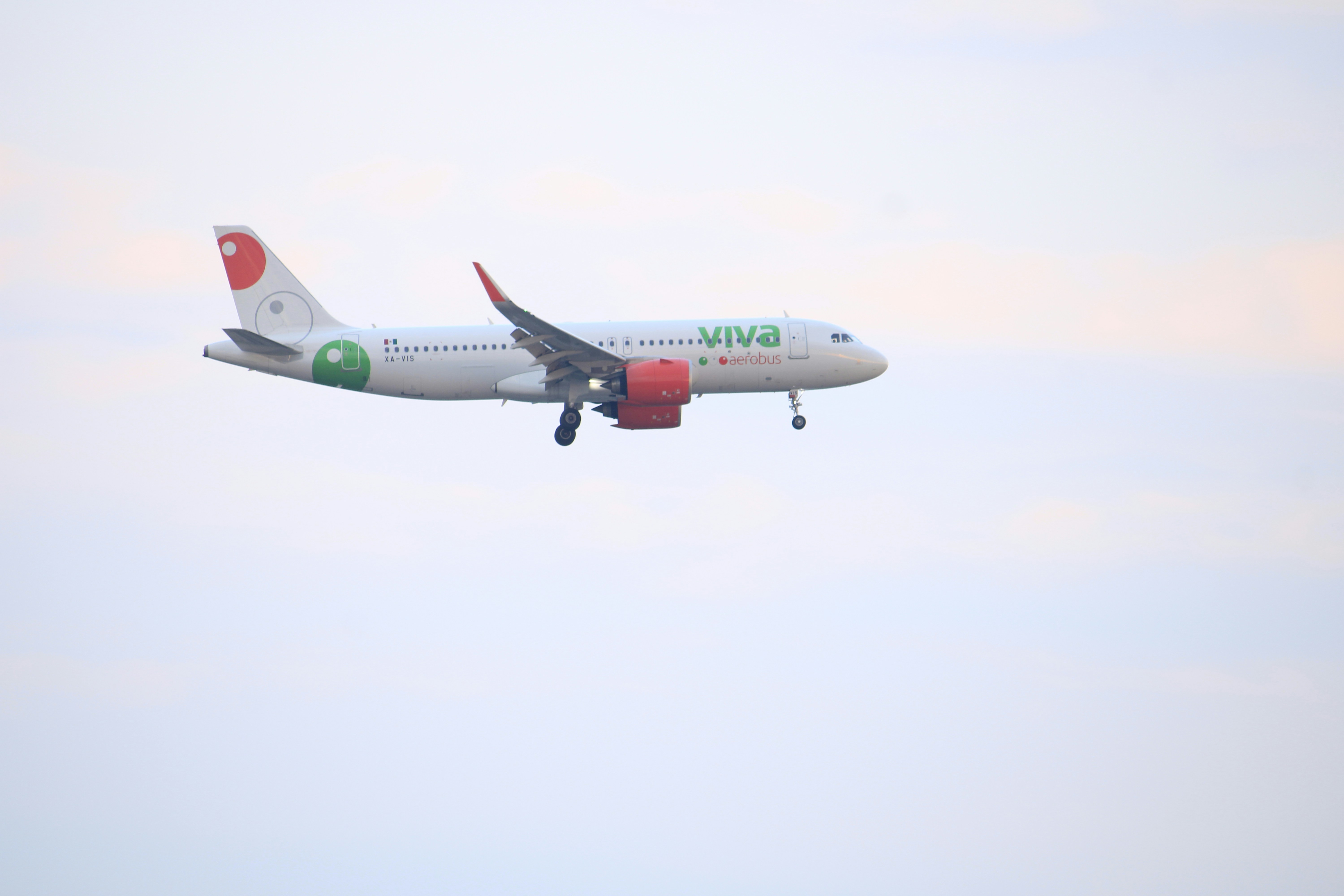U.S. Fighter Jets Intercept Russian Warplanes Near Alaska
Introduction
Recently, tensions in the Arctic region escalated as U.S. fighter jets were scrambled to intercept Russian warplanes near Alaska. This incident underscores the complex and often contentious dynamics between the United States and Russia, particularly in areas of mutual interest such as airspace security and territorial integrity. The U.S. launched F-22 Raptors, advanced stealth aircraft known for their agility and advanced combat capabilities, in response to incursions by Alaska Russian fighter jets, which typically conduct routine patrols in the vicinity.
During this particular engagement, U.S. military officials reported that the Russian warplanes were operating in international airspace but were approaching the Alaskan air defense identification zone (ADIZ). The ADIZ is a crucial buffer area meant to provide early warning in case of any unauthorized incursions. Given the strategic importance of Alaska, the presence of Russian fighter jets in proximity to U.S. territory raises significant concerns. It reflects ongoing military activities by Russia, which have been increasingly visible in recent years. This development not only showcases the operational readiness of U.S. forces but also serves as a reminder of the geopolitical stakes at play.
The actions undertaken by the U.S. military indicate a commitment to maintaining air sovereignty and are indicative of heightened military vigilance in the region. As military activities increase on both sides, the interception of Alaska Russian fighter jets by U.S. jets highlights the necessity for clear lines of communication and protocols to prevent misunderstandings that could lead to unintended escalation. The incident encapsulates the broader narrative of U.S.-Russia relations, characterized by both confrontation and the need for diplomatic engagement.
Details of the Encounter
The recent encounter in the Alaskan Air Defense Identification Zone (ADIZ) involved several Russian aircraft, notably the Tu-95 strategic bombers and Su-35 fighter jets. The Tu-95, often referred to as the “Bear,” is a long-range bomber designed for carrying out strategic missions and has been a staple of Russian military aviation since the 1950s. Its distinctive features include four turboprop engines and a high wingspan, making it a significant asset for long-distance missions. Meanwhile, the Su-35, a modern multirole fighter jet, is known for its advanced avionics, high maneuverability, and the ability to engage multiple targets simultaneously. These aircraft are equipped to execute various roles, including air superiority and ground attack, which enhances the capabilities of the Russian air force in the region.
During the encounter, these Russian fighter jets and bombers maneuvered within the Alaskan ADIZ, which is a designated area established to monitor and protect the airspace of the United States. The ADIZ itself extends beyond the national airspace, allowing the United States to identify and track inbound aircraft approaching its borders. Internationally, the ADIZ is notable for serving as a buffer zone that helps maintain aviation security in both peacetime and periods of heightened tension.
In this specific instance, the scrambling of U.S. fighter jets was a precautionary measure taken to ensure the nation’s aerial safety and to assert control over its airspace. The engagement reflects ongoing geopolitical dynamics, highlighting the persistent interactions between U.S. and Russian military forces. Tracking such maneuvers is crucial to understanding the operational strategies and intentions behind the presence of Alaska Russian fighter jets near U.S. territory.
NORAD’s Role and Statement
The North American Aerospace Defense Command (NORAD) plays a crucial role in ensuring the security of North American airspace. Established as a joint U.S.-Canadian military organization, NORAD is tasked with monitoring and responding to potential aerial threats. In the context of recent incursions by Alaska Russian fighter jets, NORAD’s response mechanisms were put into action, demonstrating their preparedness and commitment to defense protocols. This command continually utilizes radar and satellite technology to track air movements within their operational domain, providing a swift response to any detected anomalies.
Following the incident involving the Russian aircraft, NORAD released an official statement highlighting their assessment of the situation. According to the statement, they recognized the presence of the Alaska Russian fighter jets as a standard occurrence in the realm of air defense operations. These interactions are not uncommon and are often part of routine flights conducted by military aircraft from various nations. NORAD emphasized that while the frequency of these incidents can vary, they are generally considered predictable maneuvers as countries exercise their military capabilities within international airspace.
NORAD further noted that the intercepted Russian warplanes posed no immediate threat to the United States or Canada. By categorizing the strategic movements of Alaska Russian fighter jets as routine, NORAD aims to convey stability and resilience in the face of potential airspace violations. The organization reiterated its commitment to vigilance, ensuring that the air defense measures are continually assessed and calibrated to safeguard national interests. In essence, NORAD remains prepared to counteract any future incursions while operating within the established norms of international military aviation.
Significance of Russian Military Activity
The recent surge in Russian military activity near Alaska, particularly involving their fighter jets, has raised significant concerns among U.S. defense officials and NATO allies. Historically, such actions have been perceived as strategic provocations, testing the readiness and resolve of the United States and its partners. The proximity of Alaska to Russia, which allows for relatively short flight times for Russian fighter jets, heightens the stakes and adds an element of urgency to monitoring these incursions.
These flights often serve multiple purposes. Firstly, they act as a show of force, signaling to both domestic and international audiences that Russia maintains a potent military capability in the region. This posturing is likely designed to remind NATO allies of Russia’s willingness to project power as a means of asserting geopolitical influence. Moreover, such activities can be interpreted as a means to gauge the response times and readiness of U.S. and NATO air defenses, presenting a complex challenge for Western military strategists.
Additionally, the movements of Alaska Russian fighter jets underscore the ongoing geopolitical tensions, which have roots in historical conflicts and differing strategic interests. The Arctic region, rich in resources and strategically significant, has become a focal point for both military preparedness and energy exploration efforts. Increased Russian activity in this area is, therefore, a reflection of broader ambitions, as Russia seeks to expand its influence over vital maritime routes and territorial claims.
Understanding these maneuvers requires context: they are not simply isolated incidents, but part of a larger strategic calculus in a region where military presence is essential for both aspiration and deterrence. The interplay of military readiness and geopolitical strategy will continue to shape the security dynamics in and around Alaska, as the patterns of Russian fighter jet activities evolve in response to U.S. and NATO policies.
Responses from NATO and the U.S.
In light of the recent incursions by Russian warplanes in the vicinity of Alaska, both NATO and U.S. officials have taken a proactive stance to address the situation. The increased presence of Alaska Russian fighter jets has raised concerns regarding airspace security and regional stability, prompting officials to evaluate their military readiness. NATO, as a collective defense alliance, maintains a watchful eye on any potential threats to its member states, including those posed by Russian military activities.
The United States, as a key member of NATO, has reaffirmed its commitment to maintaining a robust defense posture in the Arctic region. U.S. military officials have reported heightened alert levels for air defense systems in Alaska, ensuring that any potential threats from Russian fighter jets are met with an appropriate response. Moreover, the U.S. Air Force has emphasized its capability to rapidly deploy fighter jets when necessary to intercept any approaching Russian aircraft, thereby demonstrating its readiness to protect national airspace.
Diplomatic responses have also been an important facet of the overall approach. NATO has engaged in dialogue with Russian officials to address airspace violations and reiterate the importance of abiding by international norms. This diplomatic engagement aims to reduce the risk of miscommunication and escalating tensions between military forces. Additionally, NATO members have contemplated the enhancement of joint training exercises in the region, further strengthening the collaborative defense capabilities against potential incursions by Alaska Russian fighter jets or similar threats in the Arctic.
The overall strategy reflects a combination of military readiness and diplomatic engagement, aimed at safeguarding airspace security and ensuring that the response to any Russian aerial maneuvers is both measured and prepared. These actions underscore the significance of vigilance in maintaining peace and security in the ever-evolving geopolitical landscape of the region.
Context of Ongoing Military Exercises
The recent increase in Russian military activities near Alaska, specifically with the sighting of Russian fighter jets, can be attributed to a series of ongoing military exercises that Russia conducts to showcase its military capabilities and assert its presence on the global stage. Notably, these operations often coincide with significant national celebrations in Russia, such as the Victory Day parade held in Moscow on May 9. This annual event memorializes the Soviet Union’s victory in World War II and serves as a platform for Russia to demonstrate its military might through elaborate displays of weaponry and military personnel.
During such periods, Russian fighter jets routinely undertake flights that venture close to U.S. airspace, which inevitably raises tensions with both the United States and NATO allies. These maneuvers are often perceived as a show of strength, intended to convey a message of deterrence to Western nations. For instance, the Alaska Russian fighter jets have been known to engage in regular patrols and reconnaissance missions, particularly around key strategic points in the Arctic region. This behavior not only prompts U.S. military responses but also underscores the complexities of geopolitical dynamics in the area.
Furthermore, the military exercises conducted by Russia are often characterized by comprehensive operational readiness drills that involve air, sea, and land forces. This multi-dimensional approach emphasizes Russia’s commitment to reinforcing its military capabilities in response to perceived threats from NATO and the West. Consequently, these actions serve to heighten the frequency of intercept missions by U.S. fighter jets, who are tasked with ensuring the integrity of national airspace. As tensions continue to evolve within this framework, observers remain vigilant regarding the patterns of military engagements between the U.S. and Russian forces in the Alaskan airspace.
The Drones Investigation in Denmark
The recent incidents involving unidentified drones flying near Copenhagen Airport have raised significant concerns regarding airspace security in Europe. These drones have attracted attention for their potential implications for civilian and military aviation alike, highlighting vulnerabilities that mirror those present in other airspace security issues, such as the scrutiny faced by Alaska’s airspace regarding Russian fighter jets.
The disturbances caused by these drones have led to temporary airport closures and significant flight delays, disrupting operations and causing a ripple effect throughout European air travel. Authorities in Denmark have expressed concerns that these incidents could present a threat not only to domestic security but also to international safety, echoing apprehensions in regions like Alaska where Russian fighter jets have been perceived as provocative.
Ongoing investigations into the drone sightings are being conducted by Danish law enforcement and aviation authorities. Their efforts are focused on identifying the operators responsible for these unmanned aerial vehicles, which have, until now, eluded detection. The inability to pinpoint the source of these drones accentuates concerns about unauthorized access to sensitive airspace. This mirrors the heightened alertness needed when Alaska encounters Russian fighter jets, which routinely test the boundaries of U.S. air sovereignty.
The situation in Denmark serves as an important reminder of the evolving nature of airspace security threats that can emerge unexpectedly. As Europe continues to grapple with incidents involving drones, the mounting pressure on air traffic control systems highlights the necessity for coordinated responses from national authorities and international partnerships. Enhanced surveillance and regulation may be vital to ensuring that such incidents do not escalate, paralleling the strategic measures being considered to address airborne threats from Alaska Russian fighter jets as well.
Public and Media Reactions
The recent incident involving U.S. fighter jets scrambling to intercept Russian warplanes near Alaska has generated significant interest and discussion among the public and media. Analysts and commentators have noted that this event reflects ongoing tensions in U.S.-Russia relations and raises broader questions about airspace violations by foreign military forces. The situation is particularly salient as it highlights the necessity of national defense preparedness and the vigilance required in monitoring potential threats from adversarial nations.
Expert analysis has predominantly focused on the implications of these Alaska Russian fighter jets’ activities. Military analysts suggest that such incursions reflect a strategic move by Russia to assert its presence in the Arctic region and to challenge U.S. air sovereignty. This has elicited a mixed reaction among the public, with many expressing concern over the increasing frequency of these incidents and the implications they carry for national security. Polls indicate a growing demand for enhanced readiness within the U.S. military to counter potential threats from foreign air incursions.
The media’s framing of the story has also been noteworthy. Many outlets have linked the incident to the broader narrative of U.S.-Russia relations, characterized by distrust and geopolitical rivalry, effectively contextualizing the actions of the Alaska Russian fighter jets within a historical framework of Cold War-era tensions, albeit in a modern context. Commentators have pointed out that the increasing number of interceptions of Russian aircraft could indicate a shift in the strategic dynamics of air defense, prompting discussions on whether the U.S. should recalibrate its military posture to address evolving threats more decisively.
In conclusion, public and media reactions to the incident concerning Russian military actions near Alaska reveal a complex landscape of concern, strategic analysis, and calls for enhanced military readiness as the regional security environment continues to evolve.
Conclusion and Future Outlook
The recent incident involving U.S. fighter jets being scrambled to intercept Russian warplanes near Alaska underscores the evolving nature of military engagements and airspace security in the context of heightened geopolitical tensions. The deployment of Alaska-based fighter jets indicates a proactive stance by the United States in protecting its airspace from foreign military incursions. As the presence of Russian fighter jets in close proximity continues, the potential for misunderstandings or miscalculations increases, necessitating careful diplomacy and military readiness.
In the immediate future, it is likely that U.S. air defense strategies will adapt to counterbalance the activities of Alaska Russian fighter jets. This could involve intensified surveillance operations or increased joint training exercises with allied nations. Such measures would enhance the ability of U.S. forces to respond swiftly and effectively to any potential threats, thus ensuring airspace security remains a priority amidst fluctuating geopolitical climates.
Moreover, as the strategic posture of Russia continues to evolve, the U.S. may face more frequent incursions or provocations. Continued military engagements in the Arctic or near the Alaskan airspace will likely challenge the existing framework of U.S.-Russia relations. Diplomatic channels will be crucial in managing these encounters, aiming to reduce tensions while maintaining a robust defense posture. The relationship between military presence and diplomatic negotiations will be essential to avoid escalation.
In conclusion, the incident highlights the persistent and evolving nature of military interactions between the United States and Russia. With ongoing geopolitical tensions, it is plausible to foresee similar occurrences involving Alaska Russian fighter jets in the future, necessitating vigilant military readiness and diplomatic engagement to safeguard national interests and regional stability.








